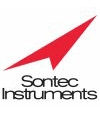Septic arthritis, also known as a septic joint or infectious arthritis, is a serious condition in the horse characterized by inflammation and infection within a horse’s joint. It can result from the introduction of bacteria or other infectious agents into the joint space, leading to infection. This infection causes significant inflammation which results in rapid deterioration of the articular cartilage and inflammation of the joint capsule. The infection and joint injury which can occur make this a life-threatening condition, and rapid identification and treatment is paramount for survival and long-term soundness.
Septic joint in horses can be caused by various factors, including:
- Trauma: Traumatic injuries, such as puncture wounds, lacerations, fractures, or penetrating wounds, can provide a pathway for bacteria or other pathogens to enter the joint space, leading to infection. Joint trauma disrupts the protective barrier of the joint capsule, allowing microorganisms/bacteria to invade and proliferate within the synovial fluid and joint tissues.
- Iatrogenic Causes: Intra-articular injections or surgical incisions can introduce bacteria or contaminants directly into the joint, increasing the risk of infection. Even with appropriate sterile technique, joint infection is a risk associated with intra-articular injection, and the risk of infection needs to be weighed against the potential benefit of intra-articular injection prior to the procedure.
- Hematogenous Spread: Bacteria or infectious agents may enter the bloodstream (bacteremia or viremia) from primary infections elsewhere in the body, such as respiratory or gastrointestinal infections, and disseminate to distant joints via hematogenous spread. This route of infection is rare in adult horses with normal immune systems, but this cause of septic arthritis is the most common cause in foals.
The clinical signs of septic joint in horses may vary depending on the severity of infection, the affected joint(s), and the horse’s individual response to the infection. Common symptoms may include:
- Lameness: Septic joints often cause severe lameness, which may be acute or progressive in onset. While the lameness may begin mildly, it often quickly progresses to severe lameness at the walk or non-weight-bearing lameness. Horses with an open or draining joint wound sometimes remain reasonably comfortable despite septic arthritis, and as such, any wound near a joint should be evaluated thoroughly by a veterinarian.
- Joint Swelling and Heat: Infected joints typically exhibit significant swelling, heat, and inflammation, which may be palpable and visible upon physical examination. Joint effusion (accumulation of fluid) may cause distension of the joint capsule and restrict range of motion.
- Pain and Sensitivity: Horses with septic joint may display signs of pain, discomfort, or sensitivity upon manipulation of the affected joint. Palpation of the joint may elicit a pain response, and the horse may resist attempts to flex or extend the affected limb.
- Systemic Signs: In severe cases of septic joint, horses may exhibit systemic signs of infection and/or pain, such as fever, lethargy, anorexia, depression, or tachycardia (elevated heart rate).
Diagnosing joint sepsis in horses requires a combination of clinical evaluation, diagnostic imaging, joint fluid analysis, and microbial culture. The following diagnostic modalities may be utilized:
- Clinical Examination: A thorough physical examination, including assessment of gait, joint palpation, and evaluation of joint range of motion, can provide initial clues regarding the presence and severity of joint inflammation or infection.
- Joint Fluid Analysis: Aspiration and analysis of synovial fluid from the affected joint are essential for confirming the diagnosis of septic joint and identifying the causative agent. Synovial fluid analysis may reveal characteristic changes such as increased total nucleated cell count (TNCC), elevated protein levels, decreased viscosity, and the presence of intracellular or extracellular bacteria on cytological examination.
- Diagnostic Imaging: Radiography (X-rays), ultrasonography, or magnetic resonance imaging (MRI) may be performed to assess joint architecture, detect periarticular changes, and evaluate the extent of soft tissue involvement. Radiographs assess boney changes, while ultrasound and MRI primarily evaluate joint effusion and synovial fluid as well as soft tissue swelling and pathology surrounding the joint.
- Microbial Culture and Sensitivity Testing: Microbial culture of synovial fluid or joint tissue samples is essential for identifying the causative bacteria or infectious agents and determining their antibiotic susceptibility profile. Culture and sensitivity testing guide antibiotic selection and treatment strategies. Unfortunately, bacteria are difficult to culture out of synovial fluid, and a negative culture does not rule out a joint infection.
The treatment of septic joint in horses typically involves a combination of medical management, joint lavage (flushing), antibiotic therapy, supportive care, and surgical intervention as needed. Treatment goals aim to eliminate infection, alleviate pain, preserve joint function, and prevent long-term sequelae. Common treatment modalities include:
- Joint Lavage: Joint lavage involves flushing the affected joint(s) with sterile saline solution or antibiotic solutions to remove infectious material, debris, inflammatory mediators, and reduce bacterial load. This is most often performed arthroscopically. However, needle lavage (using just needles within the joint and not creating any incisions) or arthrotomy (the creation of larger incisions) is occasionally used.
- Antimicrobial Therapy: Systemic antimicrobial therapy is essential for eradicating the causative bacteria and preventing further spread of infection. Empirical antibiotic therapy is initiated based on clinical suspicion and synovial fluid analysis results, with adjustments made based on microbial culture and sensitivity testing. Local antimicrobial therapy, either directly into the joint or as a regional limb perfusion, are also used frequently to increase the antimicrobial concentrations directly in the affected area.
- Analgesia and Anti-inflammatory Medication: Non-steroidal anti-inflammatory drugs (NSAIDs) and/or analgesics may be prescribed to alleviate pain, reduce inflammation, and improve the horse’s comfort level.
- Supportive Care and Rehabilitation: Horses with septic joint require comprehensive supportive care, including rest, immobilization, bandaging, and monitoring of joint function and response to treatment.
The initial therapy is focused on eliminating the infection and joint inflammation as quickly as possible. Ongoing infection and severe inflammation will damage cartilage and can result in joint degeneration very quickly. One of the long-term outcomes following septic arthritis can be the development of osteoarthritis, which can be very severe, rapidly progressing, and sometimes result in euthanasia. Support limb laminitis is another potential complication due to severe lameness of the affected limb and overloading of the adjacent limb, resulting in inflammation of the hoof laminae and coffin bone rotation. Therefore, rapid identification and aggressive treatment of septic arthritis provides the best chance at a successful outcome. If the infection is identified and treated early, horses can return to normal activity; however, the prognosis will largely depend on the joint affected, how long until treatment is initiated, and how quickly the infection is resolved.













